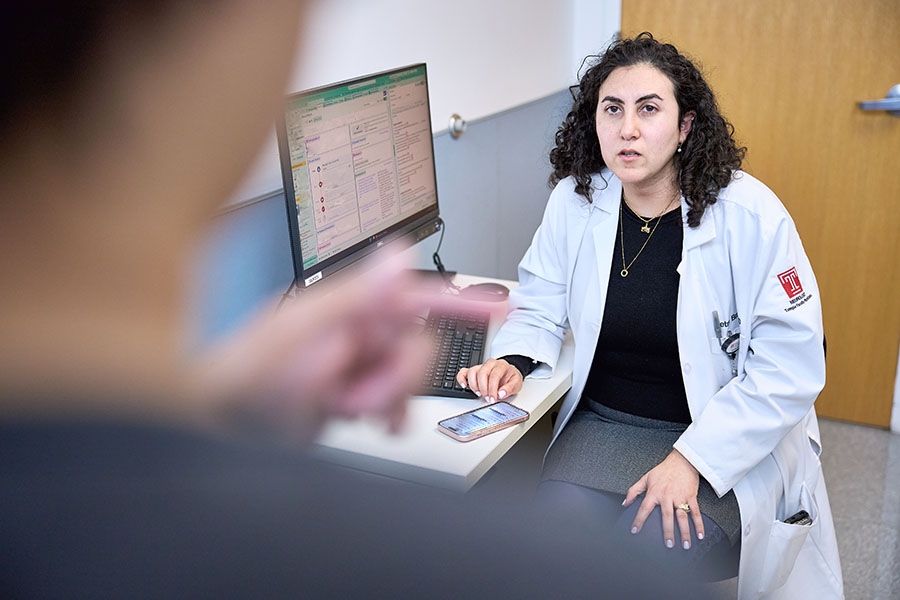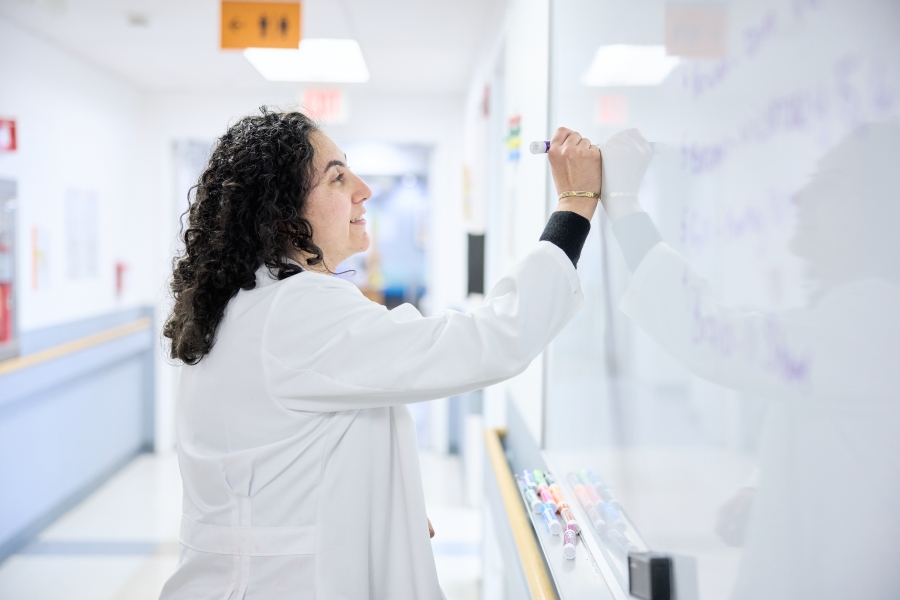As a neurologist specializing in strokes and the director of the Temple Stroke Program, I evaluate and treat stroke patients in the emergency room. I also provide follow-up care for stroke patients during their hospitalization and throughout their recovery as outpatients.
No two stroke survivors recover at the same pace and in quite the same way. Most will improve with time and some will get nearly or even completely back to normal, whereas others will continue to have problems long after their stroke.
To some extent, the likelihood of making a full recovery depends on whether patients themselves – and especially those around them – act quickly at the first sign of a stroke.
In this blog, I will discuss general expectations for stroke recovery and how prompt treatment for stroke can lead to better long-term recovery.
It’s important to stress that recovery from a stroke starts the moment a stroke begins. So let’s start there.
Prompt treatment saves brain tissue
Remember: It's important to call 911 immediately if you notice the signs of stroke, including weakness or numbness, especially on one side of the body; trouble walking or talking; and loss of vision.
Learning the acronym F.A.S.T can help you remember stroke signs and what you can do in the event of a stroke:
F — face drooping.
A — arm weakness.
S — speech difficulty.
T — time to call 911.
A stroke occurs when the blood supply to the brain is disrupted, either by a clot that obstructs blood flow to a portion of the brain, or by a blood vessel that bursts and begins to bleed into the brain. Within minutes, brain cells begin to die. The longer the stroke goes on, the more likely you are to experience long-term disability, such as paralysis or difficulty thinking, speaking, or swallowing.
However, there is some good news: the quicker you get to the hospital, the quicker you can receive treatment that can help you make a full recovery.
About 80% of strokes are triggered when an artery is blocked by a blood clot. These are called ischemic strokes. In certain patients, we can use a “clot busting” medicine to dissolve these clots. In other patients, we may use advanced procedures, such as mechanical thrombectomy, in which we put a wire — or catheter — through the groin and advance it to the clot in the brain to physically remove it.
At Temple University Hospital, a special stroke team stands at-the-ready to care for you.
As a Comprehensive Stroke Center, we have a team of neurologists, neurosurgeons, and other specialists who work together to treat stroke patients around the clock.
Temple’s stroke team is world-class. Year after year we earn national recognition for our stroke care from the American Heart Association.
Our services include advanced stroke treatments and dedicated intensive care specialists and stroke units, where patients receive care from specially trained teams.
With early treatment, patients with stroke have a much better chance of surviving people who have a stroke survive the event without major disability. In fact, it’s possible to have a stroke and a week later return to work, feeling fine and without any signs that they even had a stroke. And patients with more severe symptoms can still improve with time and rehabilitation, or rehab.
Here’s a brief look at what a stroke journey may look like:
Day one in the hospital
Rehab after a stroke begins in the hospital, often within a day of the stroke. At Temple, our multidisciplinary staff — including physical, occupational, and speech therapists — deliver rehab at the bedside, as needed. For example, they may help patients recover their abilities to perform daily living tasks, like getting out of bed and using the bathroom.
After a stroke, patients may spend time in the hospital, lasting from one to five days. Many stroke patients make significant progress in these early days, but their road to recovery may continue in the weeks to months ahead.
The first weeks after a stroke
Depending on the severity of their stroke and other factors, patients may be discharged to an acute rehabilitation facility, a skilled nursing facility, or home. Patients who go to an acute rehab facility receive intensive rehab, 3 or more hours of therapy per day, before transitioning home to continue their recovery. Sometimes patients are well enough to go home, but may require home care including potentially home nursing, home physical, occupational, and/or speech therapy in the early stages of recovery.
Other patients may be able to go directly home and pursue outpatient therapy.
Temple offers outpatient stroke rehab, which typically involves three sessions per week. Depending on a patient’s needs, the sessions may include physical, occupational, or speech therapy.
For some patients, recovery means learning to do more with the abilities they have. For example:
- An occupational therapist can help people learn new ways of doing daily tasks, such as getting dressed, bathing, or grooming.
- A speech therapist may help people relearn how to talk , to use alternative means of communication, or to improve their ability to swallow.
- A physical therapist can help improve walking and mobility.
One piece of advice I often give patients is to try not to shy away from challenging activities. For example, patients with aphasia (difficulty speaking and communicating) tend to avoid using language. They may avoid personal interactions because they can be frustrating or embarrassing. That’s understandable, but I try to remind my patients that difficult activities are miniature opportunities for therapy. So I encourage my patients to embrace these opportunities.
I also encourage them to be active and to resume as many prior physical activities as they safely can.
Months after a stroke
For many stroke patients, most of the recovery occurs in the first three to six months. However, I’ve seen patients make meaningful improvements a year or two – or even longer – after their stroke. It’s important not to give up, no matter how much time has passed.
I also encourage optimism even when patients experience severe problems after a stroke, such as weakness or paralysis. I’ll tell my patients that no one can tell what the future holds. It’s essential to give patients time to see how their individual body reacts to recovery, because stroke patients are not statistics: they’re individuals, and their recovery can exceed expectations.
Rehab can be a long process that may require long-term work to restore lost function, but no one who goes through rehab is alone. Many people are there to support and celebrate each success, including family and friends.
Having a stroke can be a life-altering experience accompanied by conflicting emotions. It’s important to let your family and your doctor know how you’re doing. In particular, speak up if you experience signs of depression or anxiety, such as feelings of hopelessness, excessive worry, decreased energy, or changes in eating and sleeping. Depression and anxiety are common after a stroke, and they can interfere with the recovery process. Fortunately, these conditions are also treatable.
Preventing another stroke
Having had one stroke puts you at risk for another. So, as part of your recovery, your doctor will determine why you had your stroke and offer a plan to help you prevent a second stroke. For example, we’ll make sure you’re taking the right medications and making the right changes in your diet and activity levels to help you manage stroke risk factors, such as high blood pressure, high cholesterol, and diabetes.
Connect with a stroke expert
If you are experiencing the signs of a stroke, call 911 right away. If you want to see a stroke specialist for prevention or follow-up care, request an appointment online or call 800-TEMPLE-MED (800-836-7536) today.
Helpful Resources
Looking for more information?

